Please click here to reach the Naturewide Images Home Page
The following text, with minor changes and different photos, is excerpted from Grasshoppers Galore, published 6 October 2008 in the Arizona Daily Star."Two years ago I added grasshoppers to the ongoing exploration of our yard. My interest in them sprang from two fronts. On the one hand, they are a familiar group of colorful and large insects that can produce sounds with their legs and wings. On the other hand, their thousands of tiny jaws were aggressively consuming our garden.
Grasshoppers belong to a category of insects known as Orthoptera (“straight wing”), referring to the straight and thickened forewings that cover their more delicate hind wings.
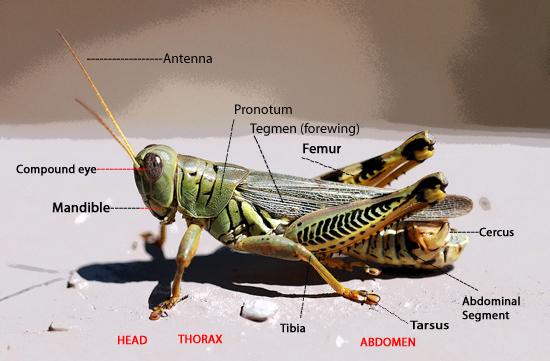
pp
A male Differential Grasshopper (Melanoplus differentialis): External features
---
In the U.S.there are around 660 kinds of grasshoppers. Related to them are another 500 of their relatives, the crickets and katydids—well known for their serenades during warm evenings. Southern Arizona, with its varied habitats, mild climate, and close ties to the tropics is an excellent place to find these insects. Here, grasshoppers occur pretty much everywhere, and, by visiting our grasslands, pine-clad mountaintops, deserts of cactus and ocotillo, sage brush and creosote flats, lake edges, and oak woodlands, we might find about one quarter of the species that live in the U.S. To the entomologist—a student of insects—many of southern Arizona’s grasshoppers are especially interesting because they barely enter the U.S. from Mexico.
ppppp
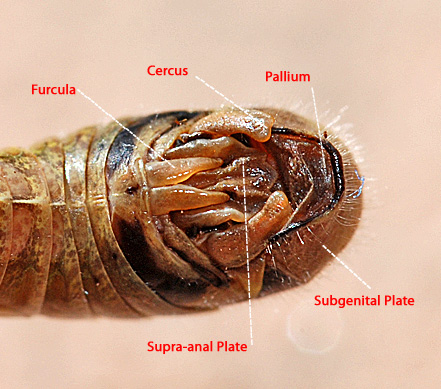
//
External structures that may be useful for identifying male grasshoppers
Admittedly, not everyone finds grasshoppers and their kin to be as charismatic as Jiminy Cricket—adorned in top hat and umbrella as he sings “When you wish upon a star.”
===

;;
Jiminy Cricket-not your average Orthopteran
---
After all, since biblical time grasshoppers, often referred to as locusts, have been responsible for more crop damage throughout the world than any other group of insects. Unimaginable numbers compete with cattle on native range lands, while others can devastate crops of cotton, grains, citrus, and vegetables. Add these losses to the cost of pesticides applied by farmers, and their annual impact ranges into the hundreds of millions of dollars. During the late 1800s and early 1900s, certain grasshoppers were responsible for the abandonment of entire communities in the American West, as they consumed not only crops, but every leaf and blade of grass. The economic havoc they wrought triggered the first welfare relief programs for farmers. To combat the plagues of migratory grasshoppers, in 1877 Congress formed the U.S. Entomological Commission—later absorbed by the U.S. Department of Agriculture.
pp
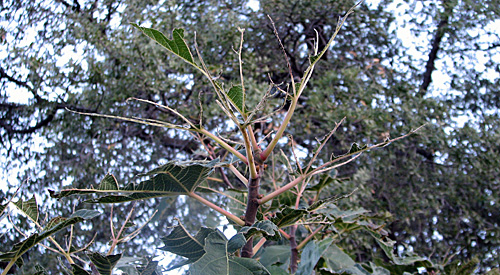
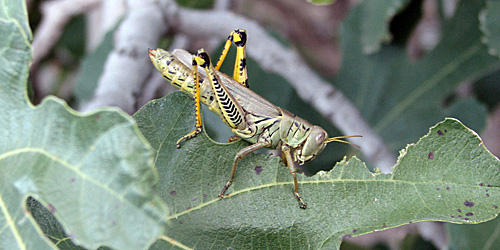
Fig leaves chewed to the mid-rib (above) by Differential Grasshoppers (below) (27 October 2008)
oo
Of all the western grasshoppers, perhaps two dozen species have earned a reputation as economic pests. Most have a benign presence and a few are even beneficial to ranchers—eating noxious weeds. Because of their abundance, they are a major source of food for wildlife such as reptiles, amphibians and small mammals. Birds especially feed heavily on them, including turkeys, hawks, roadrunners, meadowlarks, and a variety of sparrows. All grasshoppers enrich the soil with their droppings and, in the end, as their bodies are broken down by bacteria, they return nutrients to the land.
[[
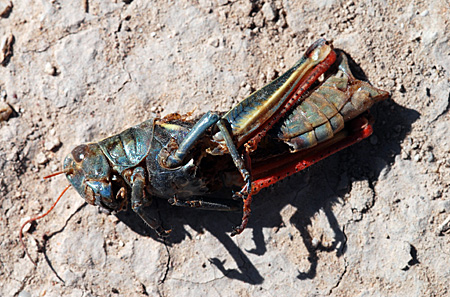
By late October, grasshoppers that have succumbed to disease, parasites, or simply old age become a common sight. Melanoplus thomasi, San Pedro House east of Sierra Vista, AZ (27 October 2008)
p
In our yard, I have encountered 45 kinds of grasshoppers and the total continues to climb. Our objective of maintaining a garden for various birds, as well as butterflies and their caterpillars means not fighting grasshoppers with chemicals. Thus, grasshoppers remain abundant here from year to year, peaking during the summer monsoons when maturing nymphs are perched on every plant in the yard. Nonetheless, grasshoppers have not really prevented the garden from thriving.
[[
By November or December most of the local grasshoppers disappear, represented now by their eggs buried in the soil. However, a concerted search will usually turn up a few that overwinter as adults or youngsters."
pp
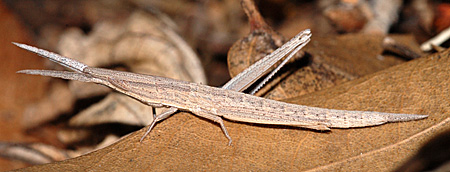
Two grasshoppers that overwinter as nymphs: Sumichrast's Toothpick Grasshopper (Achurum sumichrasti), Fort Huachuca, Sierra Vista, AZ (20 February 2008) (above)
Oak-leaf Grasshopper (Tomonotus ferruginosus), Fort Huachuca (13 February 2008) (below)
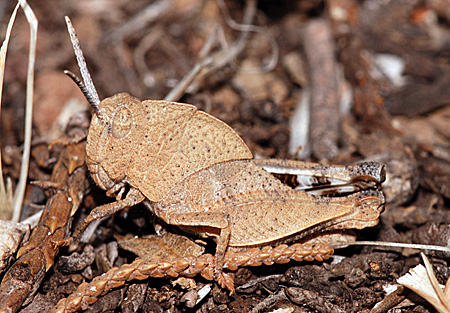





Fig leaves chewed to the mid-rib (above) by Differential Grasshoppers (below) (27 October 2008)
 |
By late October, grasshoppers that have succumbed to disease, parasites, or simply old age become a common sight. Melanoplus thomasi, San Pedro House east of Sierra Vista, AZ (27 October 2008) |
In our yard, I have encountered 45 kinds of grasshoppers and the total continues to climb. Our objective of maintaining a garden for various birds, as well as butterflies and their caterpillars means not fighting grasshoppers with chemicals. Thus, grasshoppers remain abundant here from year to year, peaking during the summer monsoons when maturing nymphs are perched on every plant in the yard. Nonetheless, grasshoppers have not really prevented the garden from thriving.
[[
By November or December most of the local grasshoppers disappear, represented now by their eggs buried in the soil. However, a concerted search will usually turn up a few that overwinter as adults or youngsters."
Two grasshoppers that overwinter as nymphs: Sumichrast's Toothpick Grasshopper (Achurum sumichrasti), Fort Huachuca, Sierra Vista, AZ (20 February 2008) (above)
Oak-leaf Grasshopper (Tomonotus ferruginosus), Fort Huachuca (13 February 2008) (below)

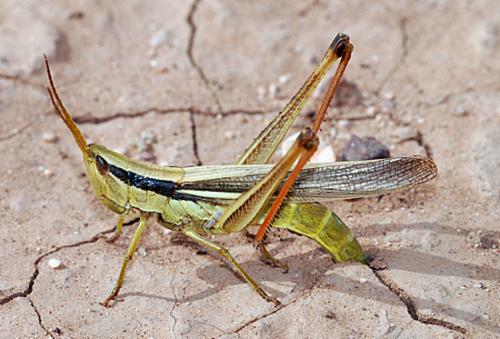 |
A Two-striped Mermiria deposits her egg pod in dry soil near the San Pedro River, Palominas, AZ (4 October 2008) |
************************************************************
The Trade Name Naturewide Images has been registered with The State of Arizona
© Robert A. Behrstock 2018
Images may not be reproduced without the Photographer's permission.